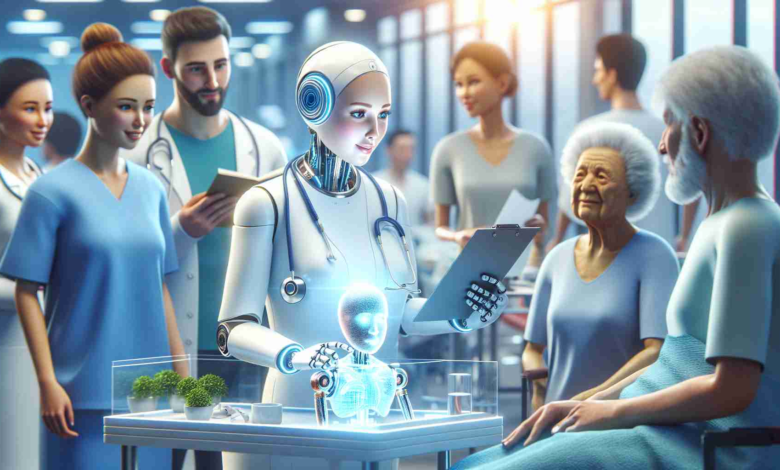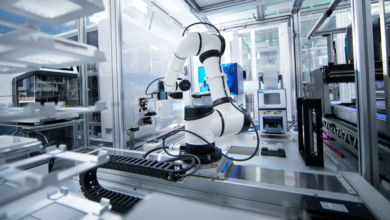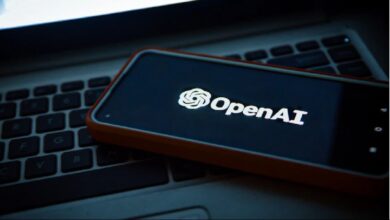The Advent of Robotic Healthcare Professionals: A Thought Experiment

Summary: In an insightful exploration of the potential future of healthcare, this article presents the hypothetical scenario of fully autonomous medical robots, dubbed Dr Cyborg and Nurse Marvel, working alongside humans. While these AI-driven entities could offer a plethora of benefits, ranging from multilingual capabilities to round-the-clock service, concerns arise around their ability to replicate human empathy and clinical judgment. The piece also reflects on the broader implications of such a shift, pondering the fate of medical education and legal accountability in a world where robots could potentially take over human roles in healthcare.
The landscape of healthcare may be on the brink of a profound transformation with the advent of artificial intelligence (AI) and robotics. Imagine a future where robots not just assist but potentially replace human clinicians in certain roles, echoing visions from science fiction. The introduction of large language models (LLMs) into AI has brought this possibility closer to reality by enabling machines to communicate in an eerily human-like manner.
Robotic assistance in medicine isn’t new; surgical robots have long performed precise operations under human guidance. The leap forward, however, would be autonomous medical robots—Dr Cyborg and Nurse Marvel—that could independently interact with patients. For instance, Dr Cyborg might boast the appearance and knowledge of a leading medical expert and offer consultations 24/7 in any language or gender requested by a patient. Their proficiency and endless capacity to work could revolutionize access to healthcare.
On the other hand, Nurse Marvel could redefine nursing care by executing tasks with supernatural efficiency and precision. From painless blood draws to immediate vitals recording, the contributions of such entities could immensely advance patient care.
Yet, these scenarios raise significant questions. Can a robot empathize like a human doctor, understanding pain beyond the physical symptoms? Would a machine be able to identify nuanced non-verbal cues or exercise the same level of clinical discretion as a seasoned physician?
Further contemplation leads to broader societal inquiries: What would become of medical education if robots assumed healthcare roles? In the event of a disaster, could we rely on robot-driven healthcare, and who would be legally accountable for their actions?
These hypotheticals don’t just challenge the status quo but highlight the intrinsic complexity of patient care. Human clinicians don’t just offer knowledge; they provide comfort that, until now, only a human touch could deliver. Balancing the integration of AI with the intangible value of human connection remains one of the greatest challenges in envisioning the future of healthcare.
The healthcare industry is gearing up for an overhaul, thanks in part to rapid advancements in artificial intelligence (AI) and robotics. The possibilities are tantalizing—an always-on, efficient, multilingual, and potentially more precise form of care—but the implications are vast and weigh heavily on stakeholders across the spectrum.
Industry Implications and Market Forecasts
The global market for medical robots and AI in healthcare is in a significant growth phase. AI in the healthcare market is projected to reach a value of tens of billions of dollars within the next decade, according to industry analysts. With R&D investments pouring in from major technology firms and startups alike, we can expect increased capabilities in AI-driven diagnostics, robotic surgery, and virtual health assistants.
This growth could mitigate current resource shortages and improve patient outcomes due to consistent, high-quality care. However, challenges remain in terms of interoperability, data security, and the cost of integration into existing healthcare systems.
Training and Employment
The impact on medical training and employment is expected to be substantial. Future practitioners might need competencies in informatics and robotics to work effectively alongside technologically advanced colleagues. The potential displacement of certain healthcare jobs looms large, necessitating robust plans for retraining and transitioning workers to new roles within the healthcare delivery system.
Ethical and Legal Issues
The ethical considerations of AI and robotics in healthcare are under active debate. Key issues include the privacy of health data employed for training AI systems, the erosion of the patient-provider relationship, and the potential loss of empathetic care.
Legal responsibility also presents a labyrinth for legislators and practitioners. The lines of accountability could become blurred if autonomous machines make errors or misjudgments, raising questions about malpractice and liability.
Patient Care and Outcomes
From the patient’s perspective, the potential benefits of rapid service, improved access, and possibly lower costs are enticing, while the perceived coldness of robot-delivered care may be a deterrent for some. Personalized care and patient satisfaction will depend on how effectively robots can reproduce the nuances of human interaction.
The disruptive potential of AI and robotics is substantial, and only with careful management can it be harnessed effectively. As the industry moves towards a more AI and robotics-centric model, collaboration among technologists, healthcare professionals, policymakers, and educators will be essential to navigating the changes and ensuring that the human element remains at the core of patient care.
For more insights on the impact and growth of AI and robotics within the healthcare industry, visit a reputable source such as the World Health Organization or familiarize yourself with the latest research through major technology advisory firms like Gartner or market research outlets like MarketsandMarkets.

Iwona Majkowska is a prominent figure in the tech industry, renowned for her expertise in new technologies, artificial intelligence, and solid-state batteries. Her work, often at the forefront of innovation, provides critical insights into the development and application of cutting-edge AI solutions and the evolution of energy storage technologies. Majkowska’s contributions are pivotal in shaping the future of sustainable energy and intelligent systems, making her a respected voice in both academic and industrial circles. Her articles and research papers are a valuable resource for professionals and enthusiasts alike, seeking to understand the impact and potential of these transformative technologies.



